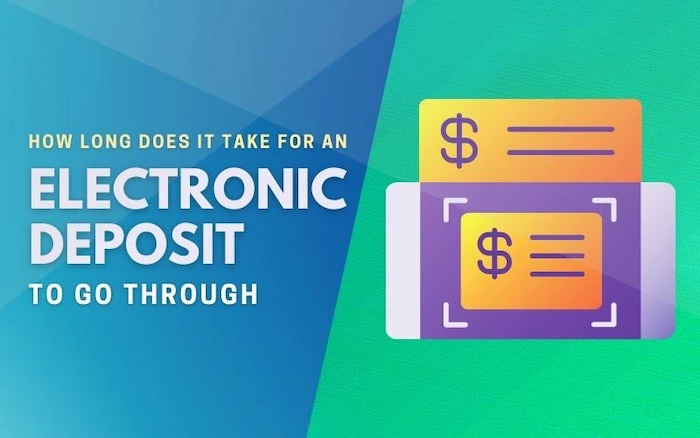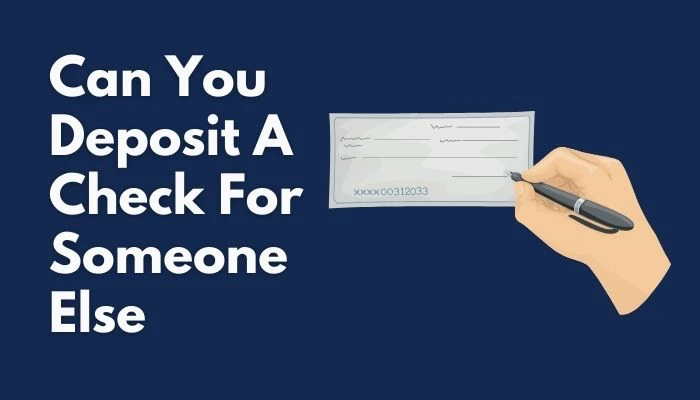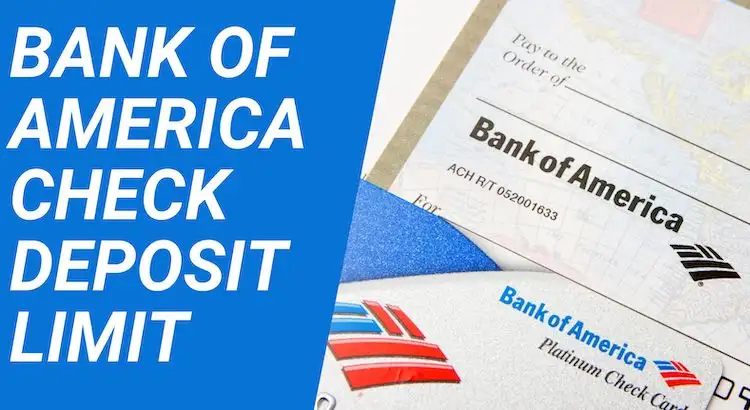An electronic check sometimes called an eCheck, is a computerized replica of a paper check. Money is deposited into the payee’s checking account using an eCheck, which is electronically drawn from the payer’s checking account and wired via the ACH network.
Payments in this category are made possible by the Automated Clearing House network, which is a computerized network utilized by U.S. financial companies. A business may withdraw money for products or services from their client’s bank account with an ACH merchant account. Customer authorization is required for every payment. It may be done by a signed contract, recorded voice conversation, or acceptance of the website’s “Terms and Conditions”.
- How Do Electronic Checks Work?
- How Long Does An Electronic Check Deposit Take To Clear?
- The Advantages and Disadvantages Of eCheck Payments Processing
- How Do I Make An eCheck Payment?
- What Kinds Of Payments Are Available With eChecks?
- Is It Possible To Use eChecks For Recurring Payments?
- Do eChecks Get Processed On Weekends?
- What If An Electronic Check Bounces?
- How Do I Cancel An eCheck?
- How Much Does eCheck Processing Cost?
- How Do I Open An eCheck Merchant Account For My Company?
- Is ACH and EFT The Same As eCheck?
- Bottom Line
How Do Electronic Checks Work?
E-Check processing is essentially the same as paper check processing, only quicker. Instead of a client filling out a paper check and sending it to the firm they need to pay, technology makes the procedure possible via electronic means, saving time and paper waste.
To complete an electronic check, you’ll need to follow a few procedures:
- Request Authorization: Before a transaction may take place, the company must obtain permission from the customer. This might be completed by filling out an online form, signing a contract, or conducting a phone conversation.
- Payment Set-Up: The company submits the payment information to the online payment processing software after approval. If the payment is recurring, it will include the date of each occurrence and other relevant information.
- Finalize and Submit: As soon as information is correctly entered into the payment software, the company hits “Submit” or “Save” to begin the ACH transaction process.
- Deposit Cash: The money is taken out of the customer’s bank account, a payment acknowledgment is emailed to the client, and the cash is deposited into the company’s bank account. After the transaction is completed, funds are usually transferred into the merchant’s bank account 3 to 5 days later.
How Long Does An Electronic Check Deposit Take To Clear?
The clearing process for eChecks differs somewhat from one bank to the other, so processing time varies. In most cases, transactions are typically verified within 24 – 48 hours of the transaction’s creation. If the payer has sufficient money in their checking account, the transaction generally gets approved within 3 to 5 working days and the funds are transferred to the payee’s account.

The Advantages and Disadvantages Of eCheck Payments Processing
Advantages
- Low Transaction Costs: Debit cards work in much the same way as credit cards, using the same processing networks. The processing networks are bypassed with an eCheck. According to Quickbooks, eCheck payments might save as much as 60% in processing costs.
- More Secured Compared to Paper Checks: Electronic Checks aren’t only more cost-effective and easier for companies to use, but they’re also safer for consumers. A paper check has the banking account number, financial institution, routing number, and account holder’s name on it. More than one person handles it throughout the processing hence increasing the chance of identity theft. In contrast, eChecks are secured by electronic encryption to avoid data theft.
- Reduces Instances of Declined Recurring Payments Cards: Debit and Credit cards are regularly lost or stolen and are usually subject to expiration. Information from checking accounts is typically more reliable. The failure rate on recurring card payments is typically above 5%, whereas the failure rate for ACH debits such as eChecks is usually less than 1%.
- You Can Receive Money from Individuals Who Do Not Have Credit or Debit Cards: There are still some individuals who choose not to utilize a credit or debit card. However, eChecks allow you to collect money from clients who do not wish to use their cards.
- Convenient for B2B Transactions: Personal checks are gradually becoming less popular, but paper checks are still being utilized in business-to-business transactions. E-checks can help speed up the processing of your account. Since the data is electronically verified, it may be validated faster than paper check.
Disadvantages
- It’s Slower Than Other Payment Methods: It might be more difficult and time-consuming to get customer approval for an eCheck than it is to swipe a card. Once you’ve deposited an eCheck, you might have to wait a long time before the money arrives in your account. A debit card or internet payment services like Venmo and PayPal, for example, generally provide money in a few minutes. An eCheck, on the other hand, takes between 3 and 5 working days to clear.
- No Holiday or Weekend Processing: Since eChecks are completed by financial institutions, they aren’t run on holidays or weekends. In case you deposit an Electronic Check on Monday, you should have money by Thursday. If you put money into your account on Friday before a holiday, it might take up to a week for the funds to become accessible.
- E-Checks Might Bounce: There are several reasons why your client’s eCheck may be denied. They might not have enough money, or the bank or gateway payment processor might have made a mistake. Customers may give an incorrect routing number or bank, or employees may make typos. Bounced eChecks are difficult to repair. They can also result in chargeback costs or non-payment for your products or services.
- Might Not Be Appropriate For High Risk Customers: Some companies are more likely to receive chargebacks or have payment issues than others. Weapon sellers, travel agencies, antique dealers, and a variety of other businesses may all fall under this category. You’ll pay a premium for eCheck processing services if you locate one.
Learn More: How Long Does It Take To Deposit a Mobile Check Online?
How Do I Make An eCheck Payment?
To send an electronic payment, ensure that the company or individual you are sending money to has a valid ACH merchant account. They can use the ACH network to take payments through electronic funds transfer with this merchant account.
Once you’ve confirmed it, here’s how to make an eCheck payment:
- An electronic payment form is sent to you by the payee. You must provide your routing number, checking account number, and the payment amount. When you click “Submit” you consent the payee to withdraw the amount of money from your bank account.
- If you want to go with another payment option, you can use phone payments to make eCheck. By phone, the payee will request your checking account as well as routing numbers. They input the numbers and payment amount into a web payment terminal. The payment is taken from the payer’s bank account and placed in the payee’s after clicking “Process”.
What Kinds Of Payments Are Available With eChecks?
Merchants pay a lower fee to process eCheck payments than they do on credit card transactions, allowing you to accept them for high-cost items including automobile payments, rent, and mortgage, as well as costly monthly subscriptions such as legal fitness memberships or retainers.
Is It Possible To Use eChecks For Recurring Payments?
E-Checks are one of the most popular recurring payments. You’ve probably heard of “direct debit” or “recurring ACH payment”, which is similar to a recurring eCheck payment.
For instance, property managers frequently request tenants to complete a recurring eCheck rent payment form. This enables them to withdraw rent from a tenant’s bank account on a specific day every month.
Do eChecks Get Processed On Weekends?
Because eChecks rely on financial institutions to execute the transaction, they are generally available only on business days. After your order is authorized, it will take 3 to 5 business days for you to receive your payment. For instance, if you pay on Monday, your payment may go through by Thursday. If you take a client payment on Friday, the money may not arrive in your company account until Wednesday.
What If An Electronic Check Bounces?
Individuals paying via eCheck will generally know when their funds will leave their account which is usually within 3 to 5 business days as opposed to a paper check. After you authorize the payment, money in your account is generally verified 24 to 48 hours later. Your eCheck will “bounce” if you don’t have enough money, just like a normal check.
Your promise to pay the requested amount is established by the authorization you obtained through phone calls or online payment forms. Contact the company you paid to determine if there are any costs for your bounced check, late payments penalties, and establish an alternative payment method immediately.
How Do I Cancel An eCheck?
If you run a business, you may need to cancel an eCheck for your clients. The precise method for doing so will be determined by the payment system you are using and the transaction’s stage.
If the transaction has already gone through, you won’t be able to cancel the electronic check and must instead issue a refund. Contact your payment processor to find out how to proceed if the payment is still pending.
Learn More: How To Deposit a Check Online To Prepaid Card?
How Much Does eCheck Processing Cost?
Rates might differ based on the eCheck merchant account provider. A fee for each transaction varies by company, with some charging a higher per-transaction rate and others charging a lower monthly fee. The following are the most frequent eCheck payment processing fee structures:
- Flat Fee: You’ll pay a constant fee for eCheck processing, regardless of the amount of the check. E-Check’s flat costs generally range from $0.30 to $2.50 for each transaction.
- Percentage Fee: It is also referred to as variable fee structure. eChecks are subject to a percentage fee structure, which charges a specific proportion of the amount of the eCheck. The amount may range from 0.5 to 3 percent.
- Flat Fee plus Percentage Fee Structure: You’ll be charged a fixed fee per eCheck processed, as well as a percentage of the overall value of the check. For instance, you might be charged a flat fee of $2 + 0.5% of the entire check amount.
When selecting an eCheck processor, it is critical to consider the fee structure. If you are handling large-scale eChecks, a flat-fee structure will almost always save you money.
In addition to the per-transaction costs, eCheck payment processing may incur various expenses:
- Application Fees: Several processors usually charge an application fee for the thorough credit checks and due diligence that are required to get your company approved. In return, they may assist you in setting up your system to ensure that it is properly linked with their back-end hardware.
- Chargeback and ACH Return Fees: You may be charged a penalty if your customer’s payment bounces or if the customer files a chargeback claim with his bank. If this occurs, your costs and percentage rate may increase.
- Monthly Minimum Fees: You may be required to pay a monthly minimum for expenses at your eCheck processor. It’s possible that you’ll be held to these minimal standards even if you don’t process a lot of checks.
- Termination Fees: If you close your company or decide you don’t need eCheck services anymore, you may be charged an early termination charge. Avoid these exorbitant costs whenever possible by thoroughly reading your contract.
How Do I Open An eCheck Merchant Account For My Company?
The process of setting up an eCheck or an ACH merchant account is similar to that of obtaining a credit card merchant account. After you’ve discovered a merchant account provider, you will generally need to submit the following information:
- Federal Tax Identification Number.
- Estimated processing volumes.
- Years in business.
- Other documents to verify the company’s standing.
The merchant account provider or the payment processor will examine this data to see whether it satisfies the acceptability criteria. It might only take a few days for your lender to grant approval.
Is ACH and EFT The Same As eCheck?
“Electronic Funds Transfer” is the acronym for EFT. This all-encompassing phrase covers a wide range of financial transfers such as:
- ACH disbursements
- Wire transfers
- Electronic benefits payment
- Direct deposits
The acronym ACH stands for “Automated Clearing House”. This refers to the electronic network utilized by financial institutions in the U.S. to provide infrastructure for payment processing firms.
The easiest way to explain the similarities and distinctions of EFT, ACH, and eCheck is that an eCheck is a form of electronic funds transfer (EFT) that makes use of the Automated Clearing House (ACH) network to handle the payment.
The payee may deposit the money using an eCheck by electronically withdrawing it from the payer’s account, transferring it through the ACH network to their bank, and then electronically depositing it into their account. All of this is done the same way paper check processing is carried out, only electronically.
Bottom Line
The more payment choices you offer, the more people you may reach out to. E-Checks can assist you in widening your client base while also saving you money on recurring payments fees. Although eChecks are not right for every business, they are a good option for those that frequently receive large-dollar payments.

